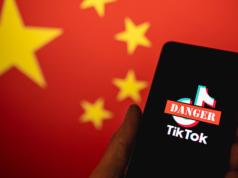
In May 2019, President Trump issued an executive order that banned a number of foreign companies, including Huawei, from using U.S.-made tech in their devices. This week, Trump extended that order, effectively banning Huawei from sourcing components from U.S. companies like Google for another year.
Trump’s original invocation of the International Emergency Economic Powers Act was largely intended to block foreign companies that could pose a threat to U.S. security, with Trump targeting both Huawei and Chinese networking equipment maker ZTE.
While ZTE eventually got off the blacklist by paying some hefty fines after it violated sanctions on Iran (before facing a new investigation over bribery), in the time since the executive order was put into place, Trump has further targeted Huawei by signing off on the Secure and Trusted Communications Network Act. The act created a billion-dollar fund that would compensate rural carriers for “ripping and replacing” Chinese-made networking equipment from Huawei and ZTE.
However, thanks to a temporary license issued by the U.S. Commerce Department (which has been extended multiple times over the past year), Huawei hasn’t been completely banned from doing business with U.S. companies. Reuters reported that the Commerce Department is expected to extend that license again this Friday when the current license expires.
The biggest effect of the ban on Huawei is that while it can continue to use Android in its phones—because Android is a free and open-source operating system—Huawei lost access to Google Mobile Services, which includes a number of major Google apps and features. Huawei can’t put Google Maps, YouTube, or the Google Play Store (among other popular Google apps) on any of its devices.
To help alleviate any frustration from customers, particularly those outside of China in Europe and the Middle East, who are accustomed to downloading their favorite apps from the Google Play Store, Huawei invested heavily in its App Gallery, which is a Huawei-curated app marketplace for the company’s phones. Huawei even claims that it has allocated thousands of engineers to work with third parties in order to port over apps from big names like the BBC, WWE, and more to Huawei’s app store.
That said, while the disruption caused by Huawei losing access to U.S.-made tech and Google’s apps was certainly a challenge, sales of Huawei phones remained quite strong in 2019. According to Counterpoint Research, Huawei increased phones sales in 2019 by more than 15 percent year-over-year to a total of 238.5 million, securing the No. 2 spot for global phone market share at 16 percent. That’s not far behind Samsung’s 20 percent global marketshare, and just ahead of Apple’s 13 percent.
However, now that the Trump administration has extended the ban for another year, and considering the original ban only affected Huawei for half of 2019, it remains to be seen what the true fallout of being on Trump’s blacklist will be. Even with the ban in place, a teardown of the Huawei’s latest flagship phone—the P40— by the Financial Times showed that Huawei was still using U.S.-made tech in its devices.
Source: gizmodo.com








